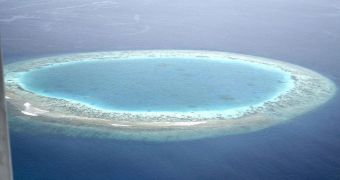Coral reefs are some of the most important ecosystems in the world, and definitely some of the most remarkable in the oceans. A large concentration of them exists in the Coral Triangle, an area located in southeast Asia. Now, researchers have set to study its health.
The Triangle is located in an area that can be found in the tropical marine waters between Indonesia, Malaysia, Papua New Guinea, Philippines, Solomon Islands and Timor-Leste.
According to scientists with the international research effort, this particular are is Earth's most important center of marine biodiversity, and is designated as a global priority conservation area.
From November 29 to 19 December, scientists in the Netherlands, Malaysia and the United States will be working together on analyzing the Sulu-Sulawesi Marine Ecoregion.
This area is located off the coasts of Semporna, Malaysia, and it will make the object of the Semporna Marine Ecological Expedition (SMEE), experts with the World Wildlife Fund (WWF) say.
The reason why this particular Malaysian region was selected for the investigation is because it makes up a very important part of the Triangle. Researchers therefore want to know how it fits in with the rest of the corals in surrounding waters.
“Similar studies have been conducted across the territorial waters of many of the nations located in the Coral Triangle region, yet few have looked at Malaysia’s 7680 [square kilometers] Semporna Priority Conservation Area,” WWF experts say.
During the investigation, the researchers will seek to determine the health of the entire ecosystem, by looking at its individual components – corals, fish, invertebrates, and other marine species.
One of the things that allows for such complex research to be carried out at this particular location is the fact that the ecoregion contains 5 major types of coral reefs, in addition to some minor ones.
Interactions between these various reef types and the species they house normally gave birth to an ecosystem in which a lot of new and unique species develop. Some live exclusively at Semporna.
The health of local animal and plant populations will be analyzed “with a modified version of the internationally standardized Reef Check methodology,” the WWF researchers add.
“This includes profiling at two different depths to take a 'snapshot' of overall reef health and looking for the best ways to enhance conservation and outreach efforts to better protect Semporna’s rich marine resources,” they add.
Some of the funds necessary for the new expedition were secured from the Adessium Foundation.

 14 DAY TRIAL //
14 DAY TRIAL //